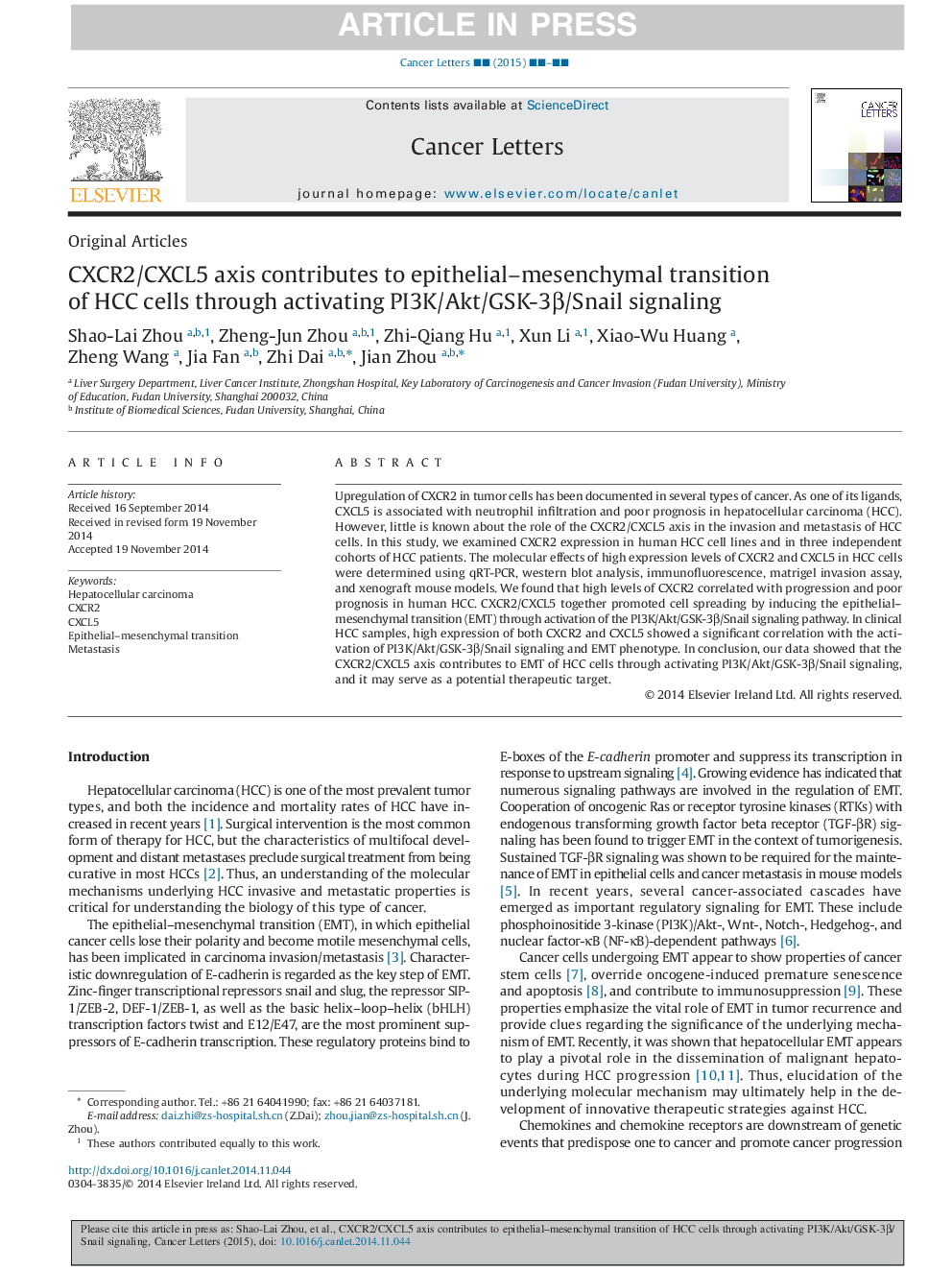| کد مقاله | کد نشریه | سال انتشار | مقاله انگلیسی | نسخه تمام متن |
|---|---|---|---|---|
| 10899549 | 1084394 | 2015 | 12 صفحه PDF | دانلود رایگان |
عنوان انگلیسی مقاله ISI
CXCR2/CXCL5 axis contributes to epithelial-mesenchymal transition of HCC cells through activating PI3K/Akt/GSK-3β/Snail signaling
دانلود مقاله + سفارش ترجمه
دانلود مقاله ISI انگلیسی
رایگان برای ایرانیان
کلمات کلیدی
موضوعات مرتبط
علوم زیستی و بیوفناوری
بیوشیمی، ژنتیک و زیست شناسی مولکولی
تحقیقات سرطان
پیش نمایش صفحه اول مقاله

چکیده انگلیسی
Upregulation of CXCR2 in tumor cells has been documented in several types of cancer. As one of its ligands, CXCL5 is associated with neutrophil infiltration and poor prognosis in hepatocellular carcinoma (HCC). However, little is known about the role of the CXCR2/CXCL5 axis in the invasion and metastasis of HCC cells. In this study, we examined CXCR2 expression in human HCC cell lines and in three independent cohorts of HCC patients. The molecular effects of high expression levels of CXCR2 and CXCL5 in HCC cells were determined using qRT-PCR, western blot analysis, immunofluorescence, matrigel invasion assay, and xenograft mouse models. We found that high levels of CXCR2 correlated with progression and poor prognosis in human HCC. CXCR2/CXCL5 together promoted cell spreading by inducing the epithelial-mesenchymal transition (EMT) through activation of the PI3K/Akt/GSK-3β/Snail signaling pathway. In clinical HCC samples, high expression of both CXCR2 and CXCL5 showed a significant correlation with the activation of PI3K/Akt/GSK-3β/Snail signaling and EMT phenotype. In conclusion, our data showed that the CXCR2/CXCL5 axis contributes to EMT of HCC cells through activating PI3K/Akt/GSK-3β/Snail signaling, and it may serve as a potential therapeutic target.
ناشر
Database: Elsevier - ScienceDirect (ساینس دایرکت)
Journal: Cancer Letters - Volume 358, Issue 2, 28 March 2015, Pages 124-135
Journal: Cancer Letters - Volume 358, Issue 2, 28 March 2015, Pages 124-135
نویسندگان
Shao-Lai Zhou, Zheng-Jun Zhou, Zhi-Qiang Hu, Xun Li, Xiao-Wu Huang, Zheng Wang, Jia Fan, Zhi Dai, Jian Zhou,